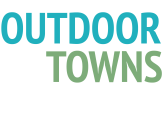Reconnecting To Its Past Brings A Brighter Future
The Susquehanna River has been a scenic corridor for travel since Native Americans first settled on its shores.
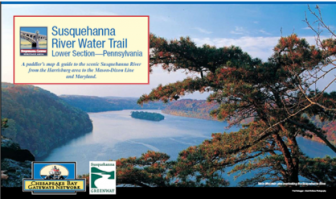
As settlement continued, Columbia Borough became an important crossroads where canals and railroads running west from Philadelphia and north from the Chesapeake would meet. Columbia was an industrious and prosperous town. Fast forward to the end of the 20th century, and things were changing.
“We were heading for trouble,” said Columbia Mayor Leo Lutz. “Businesses were moving out of town, the hospital closed down, the sewing factory closed, we had empty storefronts, and the tax base was dropping. Heavy truck traffic on Route 441 was causing safety issues and the foundations of historic buildings were starting to crumble due to the vibrations from the trucks. Columbia was dying.”
“I talked with my grandfather, who had also served as mayor,” said Lutz. “He told me the key to Columbia’s future lies in its past. Look to the river and the railroad, so we did. We looked at what natural resources we had and our parks. Our riverfront park, called Pennsylvania Railroad YMCA Park, was the place to go in the early 1900’s, but it had deteriorated and very few people were using it. Borough
Council recognized that we needed to make improvements. We knew we also needed to get Route 441 moved out of downtown.”
The mayor and borough council set to work determined to find solutions that would revitalize the town. “We started talking with PennDOT about routing heavy truck traffic out of downtown, said Lutz. “At that time outdoor recreation was ramping up and planning for the Lancaster County Northwest Trail was beginning. We thought we could use our riverfront park as the trail head. That gave us the start we needed.”
“We scheduled a community input meeting 15 years ago to do a visioning session for the park. We brought in a meeting facilitator from the National Park Service. We also invited representatives from county planning, our heritage area, and state agencies that could help us with technical assistance and the funding we would need. It was a cold and snowy day, but we still had 80 people come out tell us what improvements they wanted for the park.”
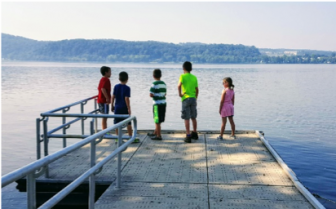
A Riverfront Park Advisory Committee of interested citizens was formed and worked with Borough Council to secure grants for developing a Park Master Plan. The Plan called for separate boat launches for canoes/kayaks and motorized boats, riverfront walking trails, bike trails, picnic areas, signage, a visitor’s center, an expanded parking lot, and rain gardens.
“People said the plan was too elaborate and that we would never get it done,” recalled Lutz. “We broke the plan into three phases. Phase One for the boat ramps, parking lot, and landscaping. Phase Two for the visitor’s center. Phase Three for expanding the park. We ear marked money in the Borough Budget for the park to help leverage grants. With each phase we did surveys, held public meetings and kept inviting funding partners so they would know what we wanted. The Pennsylvania state agencies were very supportive and collaborative. The Fish and Boat Commission helped pay for the boat launches and bathrooms, the D
epartment of Conservation & Natural Resources helped pay for the visitor’s center and park improvements, PennDOT helped with the trail, and PennVest helped with green infrastructure.”
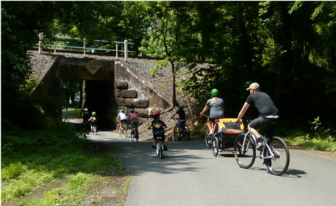
As the Borough worked with PennDOT to move Route 441, Lancaster County Solid Waste Management Authority (LCSWMA) helped with funding for the new route because it would save them on fuel cost for their trucks. LCSWMA also used their equipment to help construct the Northwest Lancaster County River Trail that starts in our park and runs north for 14 miles.
“The key for us has been listening to what our citizens wanted, having partners involved from the beginning in creating our plans, and monthly meetings of the Riverfront Park Committee to work through ideas and issues. This has enabled us to go after the funds we needed. We now have finished the first two phases and started the third phase.”
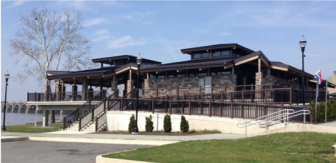
The Columbia Crossing River Trails Center is managed for the Borough of Columbia by Susquehanna Heritage, manager of the Susquehanna River Water Trail. Columbia Crossing’s educational offerings focus on the river’s historic, scenic, and recreational stories and experiences. An outfitter is on-site in the park seasonally, offering canoe, kayak, and bike rentals, including shuttle service. Over 110,000 visitors used the park last year.
There is a new brewery in town, a 31-unit apartment is going in, and an old brick warehouse is being converted to a hotel with rooftop dinning overlooking the river. Plans are underway for streetscape improvements between the park and downtown and for extending trails south of town to link with the Enola Low Grade Trail. All signs that Columbia Borough is alive and well!
Lessons Learned:
- Be proactive in addressing decline in your community. Positive change requires positive people working together.
- Civic and municipal leaders need to be active champions for change.
- Listening to what citizens want is key. Hold public input meetings to gather ideas and discuss plans.
- Ask for help from partners at governmental agencies, non-profit organizations and businesses. Engage partners early and keep them informed and involved.
- Planning is paramount to achieving your goals and securing funding support for projects.
